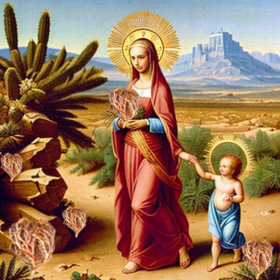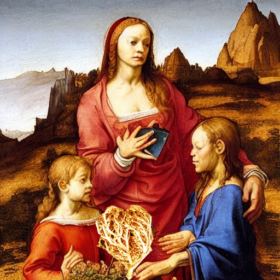ROSE OF JERICHO
The Role of the Jericho Rose in the Easter
The Jericho rose has been an important symbol in Easter traditions for centuries, and its significance can be traced back to biblical stories and legends. According to one legend, the Jericho rose played a key role in the story of Mary and Jesus in the Judean Desert.
As the story goes, Mary and Jesus were traveling through the desert on their way to Jerusalem when they became thirsty. Mary prayed for water, and suddenly a spring appeared. The pair rested by the spring, and Mary picked a rose as a reminder of the miracle.
However, as they continued on their journey, the rose began to wither and die. Mary placed the rose in a nearby crevice and prayed over it. Miraculously, the rose came back to life and flourished, earning it the nickname of the “Resurrection Plant” or the “Jericho Rose.”
This legend holds great significance in the Christian tradition, particularly during the Easter season. The story of Mary and Jesus in the desert is seen as a symbol of hope and renewal, reminding Christians that even in the most desolate of places, life can emerge and thrive.
The Jericho rose itself has also become a powerful symbol of resurrection and rebirth. Its ability to seemingly come back to life after withering away for a period of time is seen as a reflection of the miracle of Christ’s resurrection. This symbolism is often incorporated into Easter traditions and celebrations around the world.
In some countries, the Jericho rose is given as a gift during the Easter season, symbolizing the renewal of life and hope. In others, it is used in religious ceremonies and rituals as a reminder of the story of Mary and Jesus in the desert.
In addition to its spiritual significance, the Jericho rose also has unique physical properties that make it a remarkable plant. Its ability to survive in the harshest of environments and come back to life after extended periods of drought has made it a source of fascination for scientists and researchers.
Studies have shown that the Jericho rose is able to survive extreme temperatures, radiation, and dehydration by going into a dormant state. This allows the plant to conserve energy and moisture until conditions become more favorable for growth and reproduction.
The Jericho rose has also been used for medicinal purposes in some cultures, with extracts from the plant being used to treat a variety of ailments. Its resilience and adaptability have made it a symbol of strength and endurance, further cementing its place in Easter traditions and religious lore.
The Jericho rose has played an important role in the Easter story and continues to be a powerful symbol of hope, renewal, and resurrection. The legend of Mary and Jesus in the desert, along with the physical properties of the plant itself, have made it a fascinating and enduring part of Christian tradition. Its ability to survive in the harshest of environments and come back to life after periods of dormancy serve as a reminder of the resilience of life and the power of faith.



